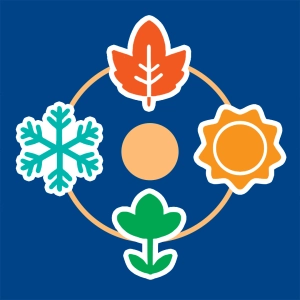 Apparent path of the Sun 3D
Apparent path of the Sun 3D
Learning objectives
- To show that the Earth's rotation on itself is responsible for the alternation of day and night;
- To show that the Earth's inclination is responsible for the seasons;
- To show that the height of the Sun above the horizon, for the same hour, varies with the seasons;
- To show that the length of daylight varies with the seasons.
The Earth rotates on itself and around the Sun. But from the Earth, it's the Sun that seems to revolve around the Earth from East to West. At noon (solar time), the Sun reaches its highest position in the sky. This position varies with the seasons. This is the Sun's apparent course.
This 3D animation shows the rotation and revolution of the Earth and Moon around the Sun. Imagine a stationary observer on Earth looking up at the sky. His field of vision, represented by the cone, rotates with the Earth. During the day, he sees the portion of the sky in which the Sun appears. At night, he sees the part of the sky not exposed to the Sun's rays. The Sun appears to cross the sky, but in reality it's fixed and the Earth rotates. The 2D image shows how the observer sees the Earth.
The proportions of size and distance are not respected. The time scale is respected.
credits:
- 3D Earth and Sun (http://planetpixelemporium.com/planets.html),
- sky data (https://simbad.cds.unistra.fr/simbad/).

Discover EduMedia for free
The interactive encyclopedia that brings science and math to life in the classroom.
Over 1,000 resources





